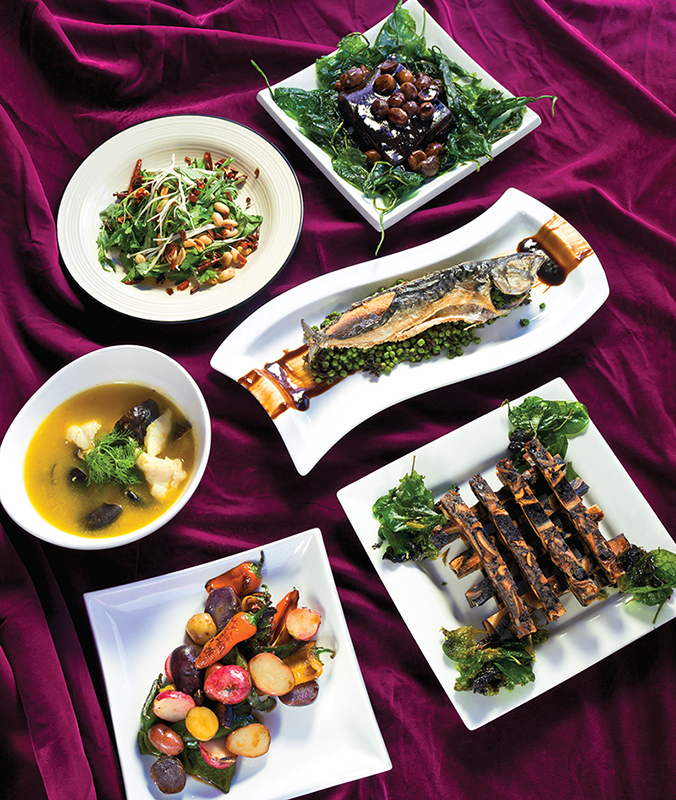It seems odd that a petite parcel of tasty pork filling tucked in a delicate wrapper can mean so much. But eating jiaozi (pot-sticker) dumplings at midnight, a northern Chinese tradition, promises a prosperous year ahead since their crescent shapes resembles gold that was used as currency in ancient China.
It’s one of many food rituals rich in symbolism that are parts of the traditional Chinese New Year’s eve family feast. Commonly known as the Spring Festival, this year’s 15-day lunar calendar celebration begins on February 10, ushering in the Year of the Snake.
Several restaurants in the city offer menus that feature some of the main dishes traditionally used in the celebration. Ernest Yan, chef and owner of Bird’s Nest of Beijing, serves a tapas-style tasting menu that changes regularly. And he starts on it early. About a month before the new year arrives, he starts making the black vinegar to go with several of the dishes. It takes so long because garlic has to be soaked in the vinegar for a month to lend the perfect flavour and body.
Yan, who specializes in spicy northern Chinese cuisine, also serves a delectable Beijing style head cheese at his restaurant that’s surprisingly meaty and densely packed with cashews, carrots and pickled cucumber. It’s served with that malty, tangy black vinegar. For the sweet and spicy maple-glazed pork belly with chestnuts and deep-fried spinach, Yan sources the Japanese pork from Sakura Farms in B.C. because it’s considerably less fatty than what North Americans are used to.
But it’s his poached basa fish and shiitake mushroom in saffron duck broth and fresh dill that is possibly the most popular item. “To this day, I still crave it,” admits Yan.
Venture south of the river to Golden Rice Bowl restaurant for tastes of China’s Guangdong province. A Cantonese feast is filled with foods that get their meaning from similar-sounding words. For example, in Chinese culture, dining on fish represents hope for a year of plenty, because the word for fish, yu, is a homonym for “surplus.” It is served whole, with head and tail attached, to symbolize a prosperous start and end for the coming year. Similarly, the word for shrimp, ha, is the sound of laughter and eating it may bring about happiness, says Miranda Lau, owner of Golden Rice Bowl.
